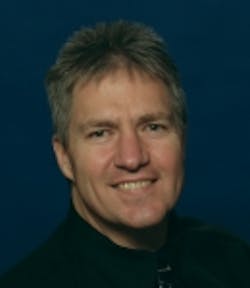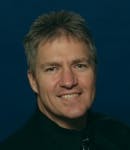The story of Nikola Tesla — Waverunner — Part 2
In our last installment, we began a study of the electrical genius Nikola Tesla. We left off with the inventor drawing in the sand an idea that would change the world. Barely out of college, Tesla had figured out how to make ac induction motors work by configuring multiple coils to create a rotating magnetic field. He probably could have retired on that development alone, but he had much bigger dreams.
In 1884, at age 28, Tesla decided to depart for the United States to “try [his] fortunes in the Land of Golden Promise.” By the time he arrived in New York — after being robbed at a train station in Paris — he had four cents in his pocket, a few hand-written poems, and the calculations for a flying machine. That's all he needed, however, because everything else was in his head.
Tesla's first stop on his quest to revolutionize the New World was the office of Thomas Edison. In that historic first meeting between the two great inventors, the 6'4” Serbian immigrant handed Edison a note. It read: “My Dear Edison, I know two great men and you are one of them; the other is this young man.” The note was signed by Charles Batchelor, manager of Continental Edison in France. Tesla then described the engineering work he had done, and his interest in alternating current technology.
Edison, with all his eggs in the direct current basket, wanted nothing to do with ac power, but he also wasn't about to let the talented Tesla get away. So he hired him on the spot, saddling him with the difficult task of improving the company's dc designs. Tesla was told he would receive a $50,000 bonus if he was sufficiently successful, which he planned to use to build his own lab where he could develop ac systems and machines.
Tesla worked day and night seven days a week for nearly a year, improving dc technology beyond anyone's expectations. When he asked for the bonus, however, Edison refused, contending that the offer was made in jest. “When you become a full-fledged American you will appreciate an American joke,” Edison said. Tesla didn't see the humor and promptly resigned.
He then met with investors who wanted to form a company under his name to design and produce a new type of arc light. Tesla thought this would give him an opportunity to develop ac motors, but the investors wanted him to focus all of his energy on lighting technology. Tesla obliged and, in 1886, developed an arc light that was safer, more reliable, and less expensive than previous designs. His patented lights were installed throughout the city, bringing wealth to the company but not Tesla himself. In fact, Tesla was forced out, and ended up working as a laborer on street gangs, digging ditches and building roads. In deep despair, he considered taking his own life.
Word got out, however, of a remarkably talented foreigner relegated to shoveling dirt. Hearing of Tesla's plight, A.K. Brown of the Western Union Company found the disgraced inventor and offered to invest in his idea for ac motors and systems. With Brown's help, Tesla founded the Tesla Electric Co., and set up the laboratories and other facilities he had always wanted.
Tesla quickly developed the motor and other components necessary for harnessing ac power. “The motors I built there,” said Tesla, “were exactly as I imagined them. I made no attempt to improve the design, but merely reproduced the pictures as they appeared in my head.” The same pictures also appeared in Tesla's application for a motor patent, which he received in 1888.
Tesla's next challenge was to find a way to produce the motors in large volume. This was more than he could do on his own, even with Brown's help, so in 1888, Tesla joined forces with George Westinghouse, who not only believed in ac power, but also owned most of the electric companies at the time. During the next two years, in one of the most prolific inventing sprees in history, Tesla built the foundation for generating, transmitting, distributing, and utilizing polyphase ac power.
That's all the space we have. In the next installment in this series, we look at Tesla's later life and other discoveries, one of which he considered to be his most important.
About the Author
Larry Berardinis
For more than two decades, Lawrence (Larry) Berardinis served on Machine Design and Motion System Design magazines as an editor and later as an associate publisher and new-business development manager. He's a member of Eta Kappa Nu, and holds an M.S. in Solid State Electronics. Today, he is the Senior Manager of Content Programs at ASM International, formerly known as the American Society for Metals.

